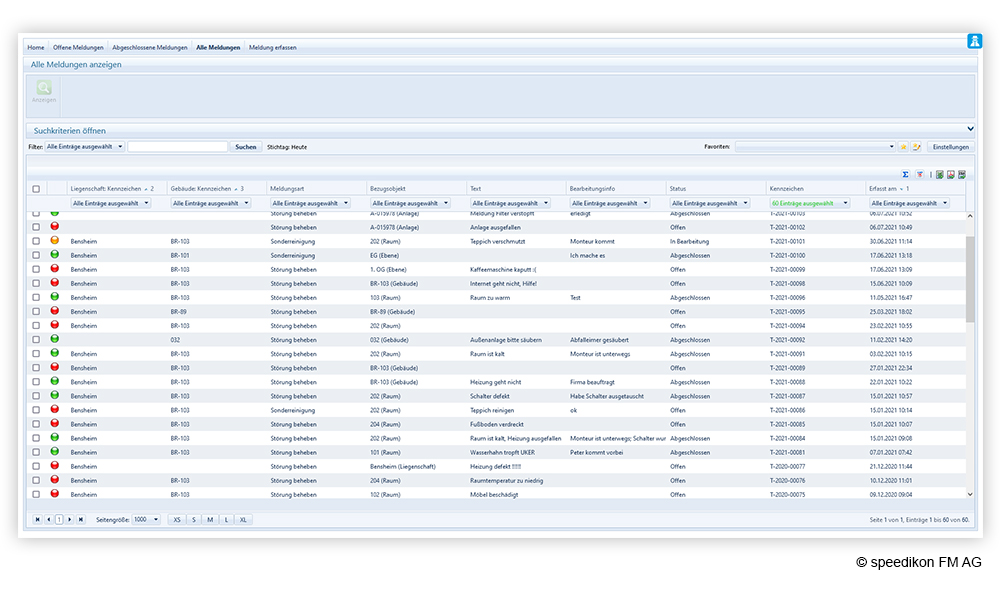It is commonplace nowadays that companies and organizations provide their staff and service providers with a centralized service desk tool. Using this service desk, defined services may be requested or tickets may be created.
The powerful functions for creating workflows within speedikon C provide you with the right tools for all your helpdesks, service desks or ticketing applications.
At the heart always lies a central point of contact, that can be accessed via any workstation or mobile device. This central platform avoids unnecessary searches for the person in charge or the correct form needed. Thereby the processes are streamlined, transparency is created, and costs are saved.
Using this platform, any user my enter a request or post a ticket with just a couple of clicks. Using autofill-functions, catalogues or self-learning fields, makes data entry not only quicker but also reduces the risks of false entries. Especially when using mobile devices, speech recognition tools may be used to avoid tedious typing.
In the case that external service providers are part of the process, the adherence to existing SLA may be monitored and analyzed. Robust data is thereby created allowing for in depth analyses using the various tools contained within the C-platform.
Besides the manually entered tickets, any kind of error or status message originating from technical installations or machines can also be handled using the service tools. Using state-of-the-art interfaces, any standard field device may be integrated and the data processes. Intelligent algorithms monitor the data and messages, analyze the content and create the according message within speedikon® C.
In most cases, especially when looking at service requests, the creating of the ticket is only the first step in the process. This is why the service-tools can be integrated into all the other modules and processes available on the C-platform. This allows for an error message from a field device to be forwarded to the maintenance process, a move request that has been granted may be relayed to the space management and the move management for further processing. Even third-party systems in place for certain processes may be supplied with the necessary data using interfaces.
A rather new and ongoing development is the integration of artificial intelligence and machine learning into the service processes. This are currently used mainly for classifying and clearing messages, for analyses in terms of abnormalities, or for automatically answering simple questions posed by staff.



